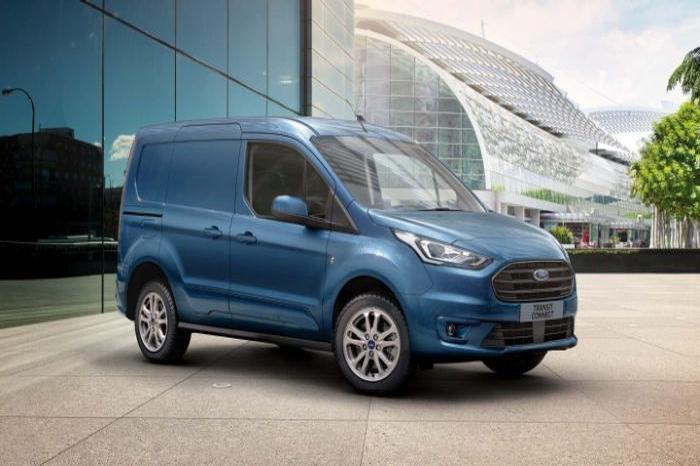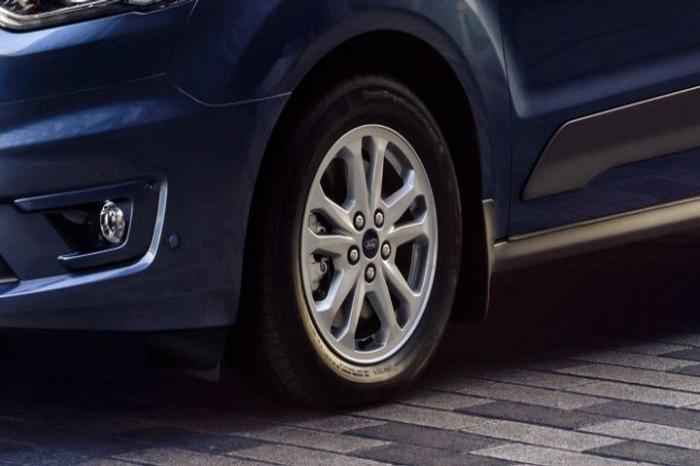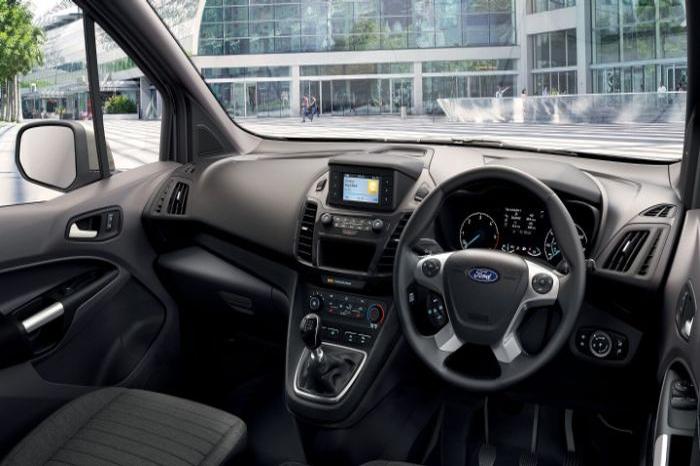What’s this?
The Ford Transit Connect is the company’s smaller-sized light commercial vehicle (LCV), although the smallest Transit it offers remains the Courier. The Connect, though, is ideal for businesses who don’t need the larger Transit Custom and it takes on a variety of tough competitors, such as the Renault Kangoo, Peugeot Partner, Citroen Berlingo, Opel Combo and, most of all, Ireland’s top-selling van, the Volkswagen Caddy.

The range
The Ford Transit Connect has a surprisingly versatile line-up, given there are just two wheelbase lengths, two seating configurations and four drivetrain choices. The regular ‘L1’ Transit Connect is 4,425mm long with a 2,662mm wheelbase, while the ‘L2’ model is stretched by 400mm, all of which comes in between the axles (so 4,825mm and 3,062mm overall length and wheelbase respectively). Every Connect has at least five doors – two into the cab, twin barn doors at the back and then a sliding door on the kerbside, but opt for the Double Cab in Van (DCIV) version (available as an L1 or L2) and another sliding door is added on the driver’s side of the body.
The DCIV will seat up to five people, but obviously significantly affects load space, reducing the cubic capacity of the Connect to 1.2m3 as an L1 and 1.6m3 as an L2, so we’ll focus on the regular van with just one row of seats for now. As an L1, it has a loading area to the back of the bulkhead that is 1,786mm long maximum, 1,543mm wide at the floor (1,249mm between the rear wheelarches) and 1,269mm tall, with a loading lip either 593- (DCIV) or 599mm (van) off the deck. As an L2, the area is up to 2,151mm long, 1,496mm wide (1,249mm between the arches) and 1,269mm tall, with the loading height from the floor being 586- (DCIV) or 599mm (van). Bear in mind the DCIV models (L1 or L2) have set maximum load widths of 1,533mm and just 1,143mm between the wheel arches.

These dimensions lead the L1 Transit Connect van to have a cubic capacity of 2.9m3, while the L2 increases to 3.6m3. These figures increase to 3.0m3 and 3.7m3 less the bulkhead, or 3.7m3 and 4.4m3 less the bulkhead and utilising the Through-Load system with the folded front passenger seat. This latter feature also increases the maximum load length for items in the L1 to 3m and 3.4m for the L2.
Other measurements to note are that all Transit Connects are 1,967mm wide in the body and 2,137mm with their mirrors folded out, while they stand between 1,819mm (L1 DCIV) and 1,830 (L1 van) tall. Payloads are rated according to the gross vehicle weight (GVW), which is denoted by 200, 210, 220, 230 and 240 badging, relating to the GVW in tonnes of each model. Payloads therefore range from 651-718kg for the L1 van ‘200’, rising to 854-865kg for the L2 van ‘220’ High Payload. For the L2 van ‘210’, they’re between 680-690kg and for the ‘240’ High Payload, 833-834kg. The ‘230’ L2 DCIV has a maximum payload of 738kg, incidentally.
For motive power, the Transit Connect uses, in the main, a 1.5-litre four-cylinder turbodiesel called the EcoBlue, which has three output levels: 75hp/220Nm, 100hp/240Nm or 120hp/270Nm. There’s also the option to have a three-cylinder 1.0-litre EcoBoost petrol engine, with 100hp/170Nm, and the principal gearbox is a six-speed manual – an eight-speed automatic is offered as an option on the higher-powered diesels, though. All of these front-wheel-drive powertrains are Stage 6.2-compliant.
Trim levels then run Base, Trend and then either Limited for luxury, or Sport for a bit more visual pizzazz. The 75- and 100hp EcoBlue engines are the only ones available on Connect Base models, while the Limited and Sport come with the 120hp EcoBlue alone. It is the Trend specification alone that has the full engine choice of all three diesels and the solitary petrol engine.
All Transit Connects (i.e. Base models) have the single side-load door, 16-inch steel wheels with silver centre caps, electric windows with a one-shot-down function for the driver, a rake-and-reach multifunction steering wheel, a radio with a USB connection and Bluetooth, a trip computer, Hill-Start Assist, remote central locking, auto start-stop and functions like ABS, EBD and ESC. Trend versions add to this spec with front fog lights, full plastic covers for the 16-inch steel wheels, a body-coloured front bumper and rear bumper end-covers, an eight-way adjustable driver’s seat, the heated Quickclear windscreen, a 4.2-inch TFT screen for the radio system, a glovebox with lid, a plastic floor for the cargo area and heated, electric door mirrors.

Above this level, both Limited and Sport build on the Trend spec, meaning you can either go up the luxury branch or along the sportier path. The Limited switches the 16s to alloy wheels, turns the exterior of the Transit Connect entirely one colour and adds power-up and power-down functionality for the electric windows, folding door mirrors, adaptive cornering front fog lights, manual air conditioning, heated driver and passenger seats, a leather steering wheel, cruise control, an adjustable speed limiter, rear parking sensors, automatic lights and wipers, and keyless start.
The Sport does what it says on the tin. It looks more striking than the other Transit Connects, thanks to dark-coloured five-spoke 16-inch alloy wheels, an entirely body-coloured exterior, front and rear body kit addenda under the bumpers, and a full stripe kit for the front, back and sides of the van. It also adds rear parking sensors, auto lights and wipers, front fog lights with a static cornering function, aluminium roof rails, voice control for various onboard functions, dual-zone climate control, a four-spoke leather steering wheel, chrome door handles and partial-leather seat trim.

Running costs
CO2 emissions for L1 200 versions of the Transit Connect range from 123-146g/km (the higher figure being the solitary petrol; diesel models top out at 130g/km), while the 220 variants are in the similar 123-130g/km range (as the petrol cannot be specified on High Payload vans), and it’s much the same story for the 210, 230 and 240 models of the L2 as well. Expect a best economy of 6.4 litres/100km (44.1mpg) from the petrol Ford Transit Connect, and anything between 5.1-4.7 litres/100km (55.4-60.1mpg) from the diesels. Ford’s CV warranty runs for a relatively short two years but that is unlimited kilometres in that time, and extended warranties can be purchased for a fee.
Carzone.ie rating
Versatile and attractive, the Ford Transit Connect also has both driving manners and an interior that are truly car-like. That makes this LCV stand out in a class where handling is not a key prerequisite, but thankfully the Connect retains all of the essential usability that a commercial van needs.
